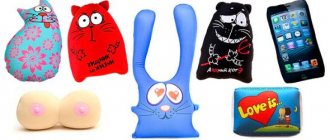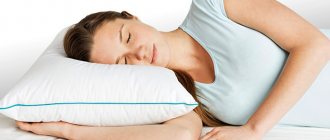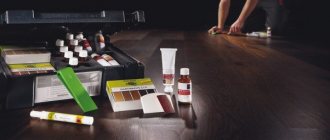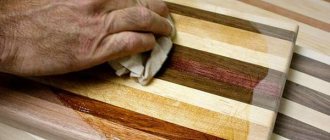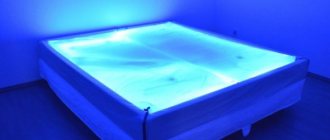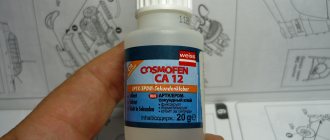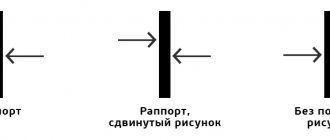Sintepon is a popular type of insulation in many countries. The material is used to create all kinds of products. The product has many advantages, but at the same time it is not without some disadvantages. The material describes in detail: what synthetic winterizer is, in what areas it is used, what varieties exist, and under what circumstances this product was created.
What is padding polyester
Synthetic winterizer refers to a non-woven material that belongs to the category of synthetic insulation. In the process of its production, different bases are used:
- polyester threads;
- secondary raw materials (polyethylene).
Sometimes synthetic winterizer contains some natural compounds and is combined. The material can have varying degrees of density.
Synthetic winterizer is light, soft and elastic. A high-quality product is very practical and can withstand active use without problems.
The filler is made in several ways:
- By gluing fibers using a special composition. This version of the material, called emulsion, has the most budgetary cost.
- Through heat treatment of the fibers, during which the threads are slightly melted and bonded together. The resulting result is known as Eurosintepon.
- The needle-punched method involves connecting threads using needles with small notches. This type of padding polyester has the highest price.
Products made using the needle-punched method are considered the most reliable and safe. Synthetic winterizer obtained through heat treatment has average quality indicators. The least appreciated option is the filler created by gluing.
Good to know! There is a simple way to determine how high quality the padding polyester filler is. To do this, you need to crush it well in your hand. A high quality product that meets GOST requirements will quickly return to its original shape. A low-grade product will remain deformed.
Conclusion
The textile industry is constantly evolving towards the modification of fabrics and materials. Synthetic winterizer is gradually being replaced by more modern insulation materials with a lot of useful characteristics.
But in the era of consumption, when things are purchased for 1-2 seasons, this inexpensive insulation will be in demand. The idea of using raw materials for the production of recycled plastic will also make it relevant from an environmental point of view.
After reading the article, you learned what padding polyester is needed for, what it is made of, how thick it is and what its production looks like.
Filler properties
Synthetic winterizer looks like a soft, light and elastic material with a uniform porous structure. It is unusual for it to absorb liquids or be filled with foreign odors.
Most often, padding polyester has a pure white color. Expensive varieties are lighter and airier. Budget products may have a greyish, yellowish or brown tint. It quickly loses its original characteristics.
Below is a table listing the main properties of padding polyester:
| Structure | Fiber weave |
| Width | From 1.5 to 2.5 m |
| Thickness | Within 0.5-15cm |
| Density | 50-400 g/m² |
| Thermal conductivity | 0.031 W/m °C |
| Wrinkleability | High-quality material is wrinkle-resistant |
| Temperature tolerance | In the widest range |
| Ability to retain heat | High |
| Period of use | Average |
| Environmental friendliness | Acceptable |
| Features of care | Does not require complex processing |
The classic material contains 100% synthetics. Other types of padding polyester containing natural or artificial additives are also produced. New methods and technologies are used in the production of such products.
What different types of product look like
There are many options for padding polyester on the modern market. The following are the main types of nonwoven material, taking into account the processing method used:
| Calendered | Such a product is subject to heat present on one or both sides. As a result, it is possible to obtain a material with a smooth surface. Its important advantages are a high degree of elasticity and inability to deform after mechanical stress. Calendered padding polyester can be found in a wide variety of products. |
| Siliconized | A similar term is often used to describe the popular holofiber filler. It is formed by numerous hollow fibers and has such characteristics as lightness, bulk, and inability to roll. It can be sheet or made in the form of small balls (lumps). Like the calendered look, this option has a reputation for being universal. |
| Ultrastep | This is a quilted padding polyester without threads. In its production, a special advanced technology called thermal stitching is used. This type of product is used to insulate clothing for adults and children. |
There are other types of filler. These include:
- woolpon;
- synthetic fluff;
- synthetic plastic.
These types of filler are not very common. For this reason, many consumers are interested in what they are made of.
Woolstipon is a combined type of material consisting of polyester fibers and natural wool (sheep, camel, goat). The amount of natural component in this version of padding polyester varies from 20% to 50%. Woolstipone is used to fill the inside of items intended for very low temperatures.
Synthetic fluff is a completely artificial material. It is produced by twisting polyester fibers into spirals. The features of synthetic down for which it is most valued are excellent breathability, volume retention, inability to accumulate static electricity, and maximum service life. The product is considered universal.
Sinteplast is made according to an updated principle. It differs from other varieties in that it includes a silicone component. This material has increased elasticity. It is mainly used as a filler for furniture and blankets.
Compound
What is insulation made of? Polyester threads are used as raw materials for the manufacture of the material. The padding polyester consists exclusively of synthetics, but there are also mixed insulation materials with polyester fibers and natural wool. This material is known as sherstepon.
The production of padding polyester is interesting: synthetic threads are loosened, combed, and mixed. To make the fibers adhere better, they are oiled. Equipment used for the production of padding polyester includes sintering or stitching machines.
Older types of insulation were held together with glue. Modern production refuses gluing because the resulting product is not environmentally friendly. At the final stage, the material is rolled up and a padding polyester is obtained in rolls. It varies in warming properties and density. The heat-saving characteristics of the filler depend on the density of the padding polyester.
There are three density levels:
- >200 g/m2 – thick insulation used for sewing workwear and winter jackets, as an insulating material;
- 90 – 180 g/m2 – moderate density synthetics. Suitable for demi-season clothing, handicrafts, filling pillows, soft toys;
- <80 – g/m2 – thin filler, recommended for sewing bedspreads and blankets, appliques, protecting furniture, etc.
Interestingly, insulation is produced from both primary raw materials (polyethylene terephthalate) and secondary materials (recycled plastic bottles). Recycled materials may seem to be of lower quality, but in fact they are no different from primary materials if processed correctly. Moreover, in Europe and Asia, PET recycling is encouraged as part of environmental protection.
Types depending on density
Also, synthetic winterizer is divided into other varieties related to its density. The latter is indicated in the form of numbers and is indicated in g/m². The higher the mentioned indicators, the higher the product’s ability to protect against cold.
Filling with a maximum density of 400 g/m² is ideal for frost. It will help you easily endure temperatures that reach critical levels (within -25 °C or more).
The 300 g/m² option is usually used to insulate a winter wardrobe. This material reliably warms in harsh weather conditions. The recommended temperature is -20 degrees.
Sintepon 200 g/m² is quite common, so many are interested in what temperature it is designed for. This option is intended for the off-season. Items with this filling should also be worn in mild winters. They are intended for use at temperatures within -10 degrees.
Products in which the density of synthetic insulation is 100 g/m² are not suitable for cold weather. The optimal temperature for them is from +5 degrees.
Thin filler with a density rating of 80 is designed for +10 °C. If this level is 50 g/m², the product is intended for temperatures not lower than +15 degrees Celsius.
Quite often the question is asked - what type of padding polyester is needed for a blanket. When creating such bedding, filler with a density of 200-300 g/m² is traditionally used.
Scope of application
Sintepon is a truly universal product that can be present in a wide variety of products. The filler is used for the following purposes:
- For warming outerwear. Various types of padding polyester are found in winter and demi-season items (jackets, windbreakers, coats, down jackets).
- In the manufacture of products for children. Insulation is included in overalls, trousers, waterproof mittens, duvets, and envelopes for babies.
- For filling tracksuits, hats, and women's skirts designed for cold weather.
- When creating all kinds of accessories (bags, backpacks, wallets), products for the tourism industry.
Synthetic padding is often found in soft toys. It is used in the production of pillows, bedspreads, and mattresses.
Attention! For products intended to be in direct contact with the owner (primarily clothing), padding polyester is used that is not made from recycled materials. Only in this case is it considered safe for the human body.
The filler finds its application in other areas. Sintepon is used in the production of upholstered furniture. It reliably maintains the shape given to such products, making them textured and elastic. In this case, options of large sizes and with a maximum thickness reaching 15 cm are used.
The material is also used in construction work. In this case, it is used in the form of thick synthetic padding and serves to insulate rooms. The product can be used as a filter for air purification. To perform such an important task, it is often placed in aquariums. The material has also found its application in swimming pools.
Types of material by structure
- synthetic batting with the addition of natural cotton;
- sherstepon, to the structure of which natural sheep wool is added. In terms of properties and characteristics, it is similar to synthetic batting, but more heat-resistant, environmentally friendly, and is used in the manufacture of blankets;
- holofiber or synthetic fluff, siliconized fiber with a highly crimped structure. Like thin padding polyester, it can be bought in the form of canvas or slabs, but manufacturers also produce holofiber in the form of balls;
- sinteplast - thermally bonded volumetric fabric with the addition of silicone. This increases the elasticity of the material, which allows it to be used for making mattress covers, blankets and upholstered furniture.
Advantages and disadvantages
Experts unanimously agree that padding polyester has many more advantages than disadvantages. The main advantages of this material include:
- lightness and airiness, thanks to which the filler makes various types of products light and easy to use;
- elasticity, allowing the filler to instantly take its original position and restore the shape specified during production;
- high degree of thermal insulation, preventing the penetration of cold air;
- durability, the ability to serve usefully for many years;
- resistance to liquids, giving maximum comfort in conditions of high humidity;
- hypoallergenic, excellent tolerability by sensitive people and very young children;
- affordable cost - today, synthetic winterizer is considered the most affordable insulation material and at the same time is not inferior to other analogues.
The weak point of the filler is its fragility due to improper care. If you violate the rules for handling padding polyester (wash it incorrectly, store it in the wrong places, etc.), it will roll up quickly enough. When used as insulation in outerwear, such material will no longer protect its owner from the cold.
Disadvantages also include a low degree of air conductivity. In jackets with thick synthetic padding, there is no full access to air, so a greenhouse effect is formed. This causes inconvenience during sports and other types of physical activity.
Good quality padding polyester can withstand washing without problems, but cheap types of material cannot boast of this ability. After numerous treatments, they often lose their original thickness and become less effective at low temperatures.
Note! Synthetic winterizer products have a reputation for being hypoallergenic, but this does not apply to fabrics produced using the adhesive method. For this reason, conscientious manufacturers do not include it in clothing and children's products. Also, such options are not used in residential premises. At the same time, emulsion insulation is often used as a material for handicrafts.
Choosing insulation for children's clothing: how many grams of insulation should there be
Every parent, when choosing winter clothes for their children, will definitely pay attention to the insulation in the overalls or jacket, since it is important that the children do not freeze under any circumstances. The variety of insulation materials that manufacturers use today is truly impressive.
In order to protect children as much as possible from the cold in winter, you need to pay a lot of attention to the choice of winter clothing, and in particular insulation. If you choose warm winter clothes for your child with high-quality insulation, then you can be completely calm about him, since he will definitely not freeze.
If earlier there were few options for insulation - mostly down or padding polyester - today there are many different modern insulation materials that are made using innovative technologies. Today, children's clothing manufacturers use such insulation materials as:
- Natural fluff;
- Isosoft;
- Sheepskin;
- Slimtex;
- Thinsulate;
- Holofiber;
- Sintepon.
Of course, this is not a complete list, since there are many more different insulation materials. Each type has its own advantages and disadvantages. Down provides excellent warmth and is quite light, but some children may be allergic to down. The clothes are insulated with padding polyester and are quite bulky and the children look like bear cubs, this limits their movement. Modern insulation materials are quite thin, but at the same time provide excellent warmth, which is why they are very popular.
Modern insulation works due to the fact that they retain heat well. Please note that it is not the material itself that warms, but the air that is located in the cavities of the insulation. We can conclude that the insulation should be quite thin and light.
- Holofiber filling, what weather it is designed for. Pros and cons, is it washable?
How to care for padding polyester
Caring for padding polyester filler must fully comply with the manufacturer's recommendations. If such rules are not followed, the material quickly loses its original properties and becomes unsuitable for use.
You need to care for the padding polyester as follows:
- Periodically wash the product. Processing can be done manually or in an automatic machine operating in delicate mode.
- Wash items containing a synthetic padding product inside at low temperatures (within +30 degrees).
- Use gentle detergents. It is best to choose liquid formulations that do not contain chlorine.
- Avoid intense squeezing and twisting. After such exposure, many types of filler become crumpled.
- Do not resort to steaming. It is permissible to iron clothes with padding polyester only through thick fabric. For safe ironing, the iron is set to the minimum temperature setting.
- Avoid intense heat exposure when drying. It is advisable to dry items with filling away from sources of intense heat.
If not properly cared for, synthetic winterizer often clumps into clumps. This situation can be corrected by carrying out a new wash in a machine using tennis balls. There is no need to add a foaming agent. The remaining tubercles need to be straightened with your hands. If the filler is removed from the product, it can be combed out.
Care
Washing synthetic winterizer items at home is not always possible. If there is a sign on the product label prohibiting washing, then the item can only be cleaned by dry cleaning. Modern synthetic filler is not as capricious as previous varieties, so it can be washed by hand and even in a machine. In this case, the general rules are followed:
- the thing is turned inside out;
- for washing use liquid detergents for synthetic products;
- optimal water temperature – 30ᵒ C;
- Additional rinsing is recommended;
- spinning and drum drying are prohibited;
- soaking is undesirable;
- After washing, the item should be lightly wrung out and laid out on a horizontal surface.
To prevent the filler from rolling up, it is recommended to place rubber needle balls in the drum of the washing machine. They prevent the insulation from rolling down, be it padding polyester, holofiber or sherstepon.
Washing blankets and pillows is also possible. Moreover, light spinning is allowed - at 400 - 600 rpm. The filler dries quickly in a draft, but you cannot dry things on a radiator or under the scorching sun.
If the product does become wrinkled after washing, it is better to put it in order manually. The filler is pinched off and distributed evenly over the product. The item is washed again with balls or sent to dry cleaning.
Dear readers of the Tkan.Club website, if you still have questions on this topic, we will be happy to answer them. Leave your reviews, comments, share stories if you have dealt with this material! Your life experience may be useful to other readers.
Origin story
The date of creation of the first version of padding polyester is considered to be 1935. At this time, British researchers were engaged in the synthesis of PET (polyethylene terephthalate) and managed to obtain a previously unknown material. For some period, the world did not know about such a discovery, but 6 years later the British officially patented it. After this, many countries around the world joined in the production of the new product.
In 1949, a product was created in the USSR that was in many ways similar to modern padding polyester filler. At first it was called lavsan. This word became an abbreviation for the name of the laboratory of macromolecular compounds belonging to the Soviet Academy of Sciences.
In 1960, Japanese specialists made a serious contribution to the development of new products. Scientists in this country have developed an original method for bonding synthetic fibers. They found that the filler can be made by applying heat to its base. Thanks to the use of this technology, manufacturers began to produce large canvases. In the new type of padding polyester, the fibers adhered to each other much better, which helped improve its quality.
On Wikipedia, the term “sintepon” combines various types of fillers of artificial origin. Today, padding polyester materials remain the most budget-friendly and are constantly expanding the scope of their application. Products created almost 100 years ago are not inferior in popularity to new versions of insulation and are present in a wide variety of products.
